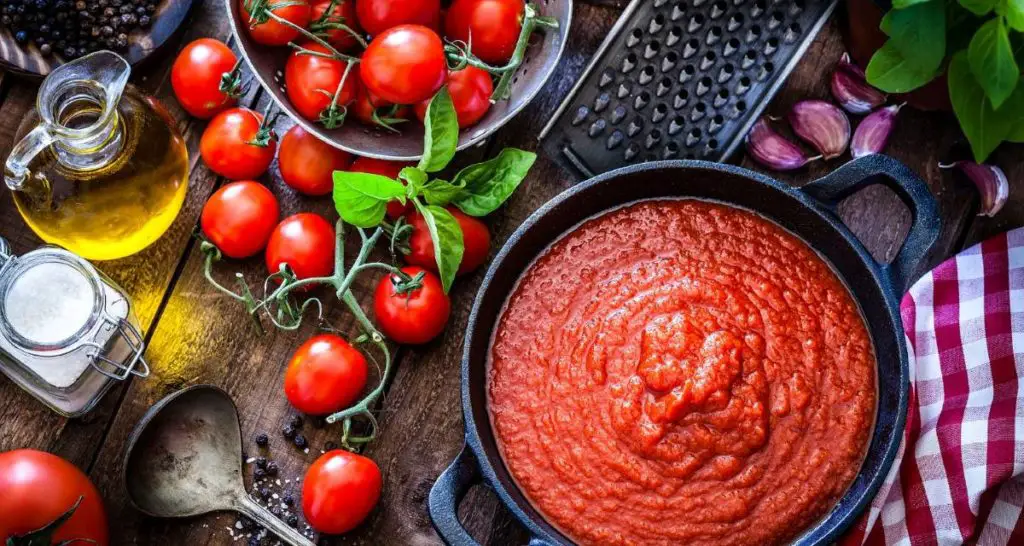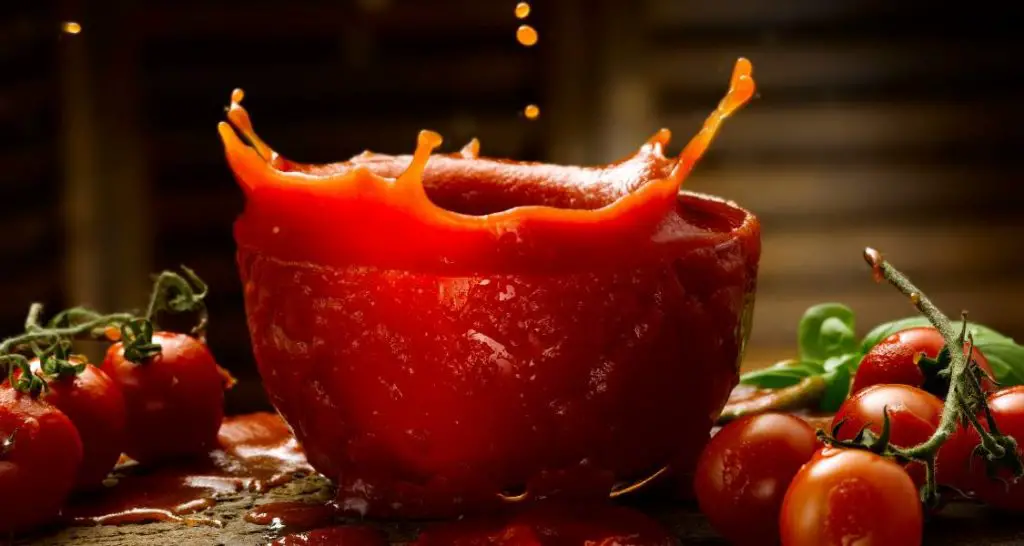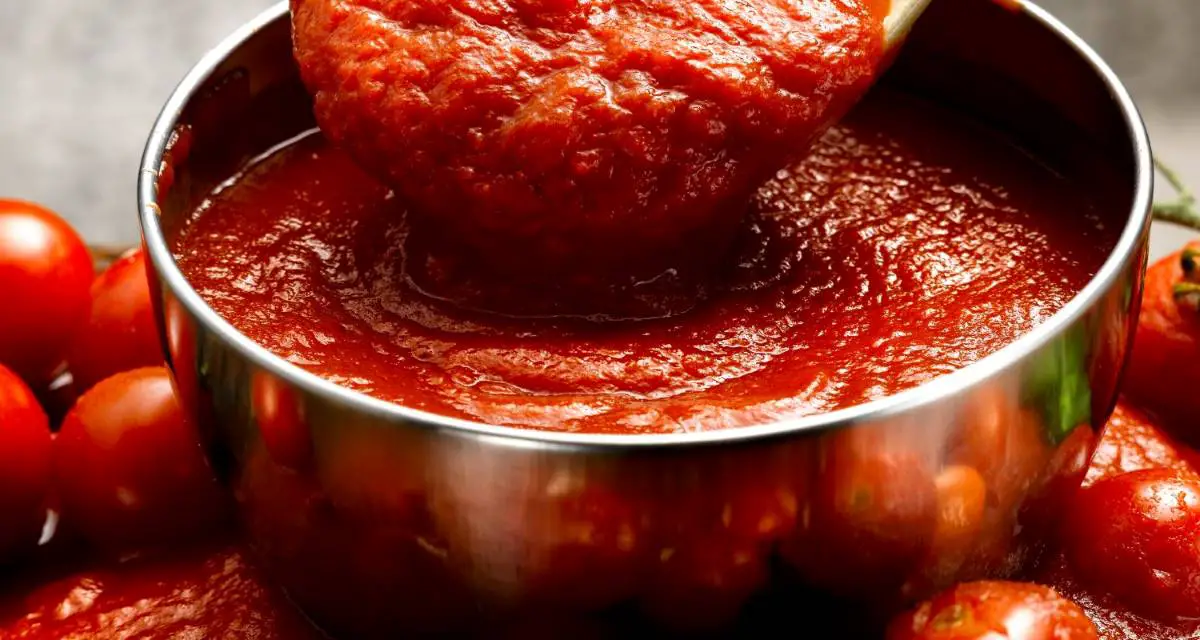Can you eat tomato sauce on a low-histamine diet? When you have histamine tolerance, you must be hyperaware of the foods you eat and whether they contain histamine or are histamine liberators. Foods that might be healthy for someone without histamine intolerance can create major issues for those who have problems breaking histamine down.
If you enjoy the taste of tomato sauce, you might wonder whether you can enjoy it or add it to your recipes if you’re sensitive to histamine. The short answer is no. Although many fruits and vegetables are low in histamine, tomatoes are not.
Since tomato sauce is a concentrated source of tomatoes, it’s not a food you want to add to your plate. Whether you make your own at home or buy it in a jar, tomato sauce isn’t a healthy option if you have trouble breaking down histamine.
Measuring Histamine in Tomatoes and Tomato Sauce
How do we know that tomatoes and tomato sauce are high in histamine? One study used a capillary electrophoresis assay to measure histamine levels in tomatoes. The values ranged from 0.3 to 24.6 mg/kg. (1) Not only are tomatoes and tomato sauce high in histamine, but they are also histamine liberators. Why is this important?
A histamine liberator is a substance that releases histamine from mast cells, which produce histamine. Some foods that don’t contain high levels of histamine or other biogenic amines can still be histamine liberators. Histamine liberators are found in a variety of sources, including certain foods and medications.
Foods high in histamine or other biogenic amines, such as aged cheese and cured meats, are obvious sources of histamine liberators. However, some foods that don’t contain high levels of histamine or other biogenic amines can still be histamine liberators.
Examples of histamine liberators are citrus fruits, wine, and green tea. Physical stimuli, such as heat or cold, allergens, and some medications are also histamine liberators, which can trigger or worsen histamine intolerance symptoms. For example, opiates, medications used to treat pain, can trigger histamine release. (5)
Tomatoes are a double whammy – they contain histamine and boost liberation of histamine from mast cells. So, even if you love the taste of tomato sauce, it’s best to avoid it if you have histamine intolerance.

Tomato Sauce Usually Contains Preservatives Too
Beyond the naturally high histamine content of tomatoes, tomato sauce manufacturers also add preservatives that could be problematic if you have histamine intolerance. That’s why it’s safest to eat mostly whole foods naturally low in histamine and avoid packaged foods that almost always contain preservatives.
Because freshness is a factor, it’s important to eat your meals quickly and avoid leftovers. The longer foods sit, even in a refrigerator, the more histamine-producing bacteria can accumulate and increase the histamine content of a food.
Everyone Is a Bit Different
Despite tomatoes being high in histamine, I’ve had patients claim they can eat a few cherry tomatoes without experiencing a worsening of their symptoms. It may come down to the balance of your diet. Cherry tomatoes might not worsen your histamine intolerance symptoms if you’re not consuming other foods containing histamine.
This relates back to the concept of the histamine sink. Each person has a certain tolerance or “sink.” You can fill that sink to a certain level without experiencing symptoms, but if you overshoot, you might overwhelm the enzymes that break it down (which are already in shorter supply if you have histamine sensitivity). (3)
Still, I wouldn’t recommend consuming tomatoes or tomato sauce if you have histamine intolerance. They wouldn’t be included on a list of low-histamine foods, and you have other options.
What If You Still Love the Flavor of Tomato Sauce?
Tomato sauce makes foods taste more delicious, and it’s packed with heart-healthy lycopene, an antioxidant and anti-inflammatory nutrient. (4) Still, its anti-inflammatory benefits aren’t enough to overcome its high histamine content. So, tomatoes are off the menu if you have histamine intolerance.
But what if you still love the flavor? One site on the internet shares a recipe for making Nomato sauce, a histamine-free substitute for tomato sauce with a similar taste without the tomatoes and histamine. (2).
The recipe includes a medley of root vegetables and seasonings, and it’s a tasty and low-histamine substitute for tomato sauce, barbecue sauce, ketchup, or salsa. You can use it as a pizza sauce or on pasta if the other ingredients in your recipe are low histamine. Also, find out whether vinegar is a high histamine sauce.
Be careful about adding cheese to a pizza though. Learn more about the histamine content of cheese in this article. It’s encouraging that there are histamine-free substitutes for so many foods these days!

Avoid Tomato Sauce on a Low-Histamine Diet
Can you eat tomato sauce if you have histamine intolerance? Steer clear of it and make your own faux tomato sauce, using a recipe for Nomato sauce. Find out whether you can enjoy pesto on a low-histamine diet.
Avoid eating tomatoes in any form, since the vegetable (which is really a fruit) contains histamine. The good news! There are low-histamine vegetables you can enjoy on a low-histamine diet.
As always, keep a food diary. It’s the best way to monitor your histamine intolerance symptoms and understand what foods and lifestyle habits trigger your symptoms.
References:
- Bolygo, Elek & Cooper, Paul & Jessop, K & Moffatt, Frank. (2000). Determination of Histamine in Tomatoes by Capillary Electrophoresis. Journal of AOAC International. 83. 89-94. 10.1093/jaoac/83.1.89. https://pubmed.ncbi.nlm.nih.gov/10868574/
- “Low-Histamine Nomato Sauce | Diet, Supplements and cutting-edge tips ….” 20 Aug. 2021, https://histamineintolerance.net/blog/low-histamine-nomato-sauce-Owf7H.
- Maintz L, Novak N. Histamine and histamine intolerance. Am J Clin Nutr. 2007 May;85(5):1185-96. doi: 10.1093/ajcn/85.5.1185. PMID: 17490952.
- Palozza P, Parrone N, Catalano A, Simone R. Tomato Lycopene and Inflammatory Cascade: Basic Interactions and Clinical Implications. Curr Med Chem. 2010;17(23):2547-63. doi: 10.2174/092986710791556041. PMID: 20491642. https://pubmed.ncbi.nlm.nih.gov/20491642/
- Barke KE, Hough LB. Opiates, mast cells and histamine release. Life Sci. 1993;53(18):1391-9. doi: 10.1016/0024-3205(93)90581-m. PMID: 7694026.
- Shulpekova YO, Nechaev VM, Popova IR, Deeva TA, Kopylov AT, Malsagova KA, Kaysheva AL, Ivashkin VT. Food Intolerance: The Role of Histamine. Nutrients. 2021 Sep 15;13(9):3207. doi: 10.3390/nu13093207. PMID: 34579083; PMCID: PMC8469513.


